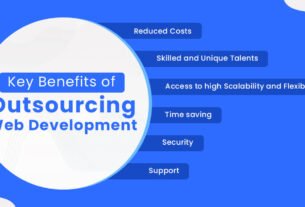While the look of your site is very important, if it’s hard to navigate and the main content isn’t visible and easily accessible, then the simple fact is; your site isn’t very useful to your visitors and they won’t waste any time moving on to your competitors.
Here are some simple tips that you can use to improve the usability of your website to ensure that it looks good, functions properly and remains user-friendly.
Content
The first thing you should do is make sure that your content is free from spelling and grammar errors. Break it up into small easy to read blocks of text that your visitor can consume quickly, without much effort. You should also make sure the font size of your text is large enough to read easily so that your visitors don’t have to strain their eyes to read the actual text.
If you are using CSS to style your website it will do most of the work for you by setting the font size and spacing out the lines according to your desired style set.
Navigation
Make it easy for visitors to find content that brought them to your site by focusing on good navigation. For instance, if you have hundreds of articles on your site and a certain visitor wants to find one specific article, you have to provide them with an easy way to locate it quickly.
You can do this by providing a search feature on your website, adding easy to see navigation links and including a sitemap. how you include these aspects in your design will depend on what platform you are using to build it. If you are using a platform like WordPress you will be able to use a SQL-driven database to help organize your content easily and effectively.
Load Time and Compatibility
It’s important to make sure that your site loads fast so that you don’t lose visitors before they’ve had a chance to see what you have to offer. Fact: most internet users will leave a website within 15 seconds if it doesn’t load completely. There are several things that you can do to reduce the load time of your website including optimizing your images, limiting the amount of scripts you run, Etc.
It’s important to keep in mind that your visitors will be using different Web browsers when viewing your website, so you will also want to ensure that your website is cross browser compatible.
There are many tools available that you can use to check the load time and compatibility of your website. they will also provide you with helpful tips and information that you can use to make sure that your visitor has a smooth and enjoyable experience on your website.
Here are a few to help get you started:
Pingdom.com
http://tools.pingdom.com/fpt
Webpagetest.org
http://www.webpagetest.org
Browsershots.org
http://browsershots.org
Last of all you should test each and every link on your site to ensure that their functioning properly. There is nothing more irritating to a visitor than clicking on broken link’s. Of course you should check the links manually whenever you create a new page. However, if you have hundreds or even thousands of pages on your website then you may want to use a good link checking tool like the one at: http://validator.w3.org/checklink
By taking the time to make sure that your website is easy to navigate and user-friendly you can help ensure that your visitors will stick around!





